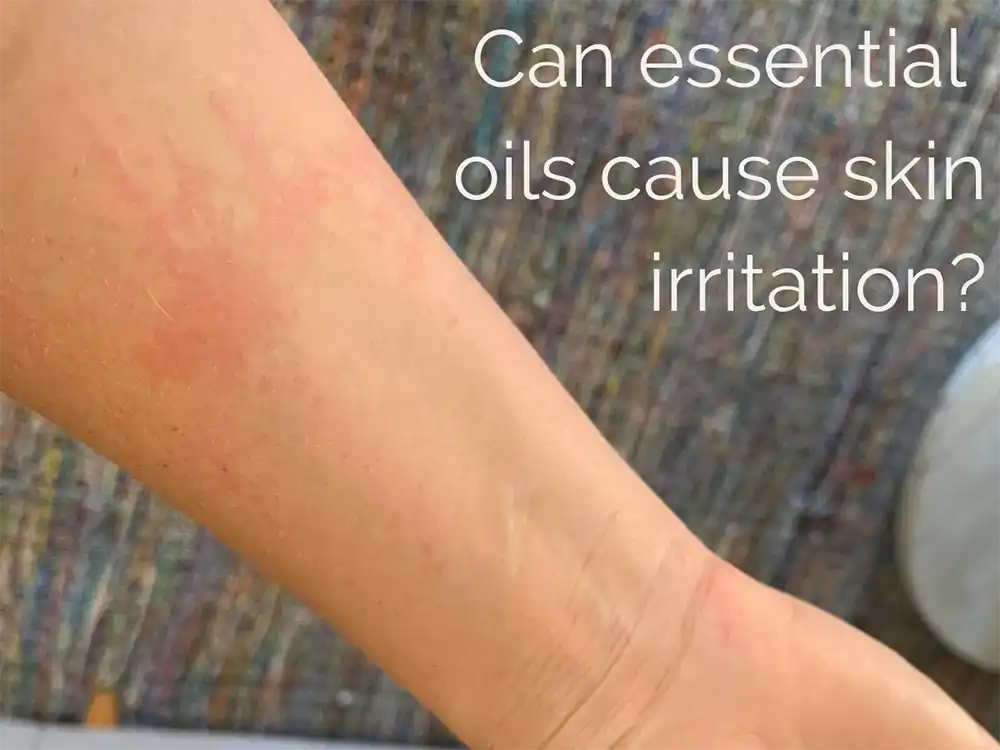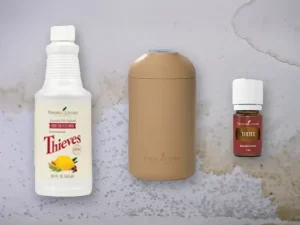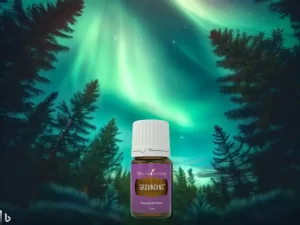Can essential oils cause skin irritation?
Yes some essential oils can cause redness and skin irritation. In some cases the irritation can be quiet mild and short lived but for some people they are actually allergic to essential oils.
While a lot of people in the essential oil world will say you can’t be allergic to essential oils, this isn’t actually correct. For years I had heard that you couldn’t be because essential oils don’t contain proteins. Apparently you can only be allergic to things that have proteins in them. While the first part of that statement is true, the second part is not. You can read more about this here.
Essential oils are very potent and some may be irritating to the skin, particularly what we call ‘hot oils’. Hot oils are oils that can cause a hot or warming sensation when applied to the skin. Examples of hot oils and blends include Cinnamon Bark, Clove, Lemongrass, Oregano, Thyme and Thieves essential oil. For some people, Peppermint’s cooling sensation can be too intense.
But it is not just the hot oils that can cause irritation. A good friend of mine actually has developed a skin irritation to Blue Cypress essential oil and any of the blends that contain Blue Cypress essential oil. This is rare but people can build up a skin sensitivity to a particular essential oil over time.
My Aromatherapy teacher had the same thing happen with Tea Tree essential oil. She was using a lot of Tea Tree and one day her skin said “enough” and started to become irritated. It took her five years before she could use Tea Tree essential oil again.
What can you do if your skin is irritated by an essential oil?
If discomfort or irritation occurs, stop using the essential oil and apply V-6 Vegetable Complex or another carrier oil to the affected area.
Essential Oils are attracted to fat; if you try to wash them off with water, the oil will only drive deeper into the skin.
If a rash occurs, this may be a sign that the essential oil is reacting with a chemical that it has come in contact with in your skin. Some people see this as detoxification.
Drink adequate water to encourage the release and removal of toxins in your body.
Before using the essential oil again, perform a patch test (see above under “What is a “hot oil?”) and dilute with a carrier oil as needed.
Chemical Exposure
People who have been exposed to a lot of chemicals are often more susceptible to skin irritations from essential oils. This often comes from nasty chemicals in their workplace such as people who use a lot of cleaning chemicals, hairdressers who use bleach and colours, mechanics who work with brake dust and diesel and even people who work with inks and dyes.
But even everyday products contain chemicals that build up in our bodies and can react when they come into contact with essential oils. I have seen this with people who have used commercial deodorants and have switched to natural deodorants. The essential oils and even the bicarb soda can start irritating the skin under the arms where chemicals such as aluminium salts are stored.
There are just so many ingredients in every day products that we put on our bodies or inhale which not only cause skin irritation but can cause asthma, eczema, eye irritations, breathing issues, urinary tract infections, hormone imbalance and they are even linked to cancer.
What are some of the Ingredients to avoid?
One of the best ways to make your home a natural haven is to be aware of what ingredients to avoid in your personal care and cleaning products. We’re exposed to toxic chemicals every day, but you can reduce your exposure if you know what they are. Unfortunately, it’s not enough to simply look for a “non-toxic” or “natural” claim on the label. These claims aren’t regulated by the TGA, so you’ll have to be a label sleuth and learn how to identify iffy ingredients yourself.

You’ll want to avoid these questionable chemicals:
- Triclosan: An Endocrine disruptor that can cause antibiotic resistance and is linked to increased allergen sensitivity and disruption of thyroid function even at low levels. Found in: liquid soap, bar soap, toothpaste, and antiperspirants
- DEA-related ingredients: Emulsifiers or foaming agents that may be carcinogens. Found in: creamy or foaming products, such as moisturisers and shampoos
- Phthalates (DBP, DEHP, DEP and others): A class of plasticizing chemicals used to make products more pliable or to make fragrances linger longer. Phthalates disrupt the endocrine system and may cause birth defects. Found in: synthetic fragrance and fragranced household products
- Parabens (methyl-, isobutyl-, propyl- and others): Preservatives commonly used to prevent the growth of bacteria and mould. They’re Endocrine disruptors and may alter hormone mechanisms and interfere with male reproduction. Found in: shampoo, face cleanser, body wash, body lotion, and foundation
- Sodium Lauryl Sulfate and Sodium Laureth Sulfate (SLS and SLES): SLS and SLES are surfactants that create bubbles and foam in soaps, shampoos, and toothpastes. They can cause skin irritation, trigger allergies, and disrupt hormones and are linked to neurotoxicity. SLES is often contaminated with 1,4-dioxane. Found in: soap, shampoo, and body wash
- MIT (methylisothiazolinone) and BIT (benzisothiazolinone): Known skin irritants that are considered neurotoxic. They’re antibacterial ingredients that are EPA-registered pesticides and used as preservatives. Found in: personal care products
- Phenoxyethanol: A common preservative considered to be an endocrine disruptor, neurotoxin, and skin and eye irritant. Found in: many “non-toxic” cleaning products• Quaternary ammonium compounds, or “quats”: Chemicals associated with asthma and reduced fertility, as well as birth defects in animals. Found in: antibacterial cleaning supplies, disinfecting air fresheners, and fabric softeners
- Polyethylene glycol (PEG compounds): Can be contaminated with 1,4-dioxane which may be a carcinogen. Found in: soaps, creams, sunscreen, and shampoos
- Parfum/Fragrance: Synthetic fragrances that have been linked to asthma, allergies, skin irritation, metabolic syndrome, diabetes, obesity, cancer, nervous system, respiratory, and endocrine disruption. Fragrances may contain any combination of 3,000-plus chemical ingredients. Companies don’t have to disclose the fragrance formula because it is protected under federal law’s classification of trade secrets.
In addition to these chemicals, you should look out for warnings and claims that might indicate a product is harmful to your health. Be wary of products with these on the label:
- Directions that require a mask or ventilation while using the product
- Instructions for hazardous waste disposal. If you can’t throw them in your garbage, do you want them all over your house? The fact that the EPA classifies oven cleaners, drain cleaners, wood and metal cleaners, polishes, toilet cleaners, tile tub and shower cleaners, and laundry bleach as hazardous waste is one reason you should eliminate them from your home.
- A “combustible” or “flammable” warning
- An “unscented” or “free and clear” claim on the label. Unscented products can contain masking agents that are added to simply cover up fragrance with another toxic chemical. Always look for an ingredient list and not just the unscented claim.
Quality Matters
Quality really does matter when it comes to essential oils. Adulterated essential oils can cause a lot of problems, including skin irritation when used topically and even aromatically.
That’s one of the reason’s why I only use and recommend Young Living Essential Oils.
Are essential oils safe?
This is one of the most googled questions when it comes to essential oils. So let’s talk about it. Join us as we talk about how you can use essential oils safely.











 Subscribe to Hot Oily Mumma
Subscribe to Hot Oily Mumma